





You could say we asked for it with the widespread use of a few Asian Euonymus species in our landscaping. It's inevitable that Asian insects would follow. The Euonymus leaf notcher (Pryeria sinica) is a recently identified Asian moth that's finding a comfortable new home in Maryland and Virginia gardens. Learn to recognize this pest and be ready to greet it with safe, effective control methods.
Modern entomology is less than exciting? Not so.
In 2001, at least one Mid-Atlantic gardener noticed a group of tiny caterpillars nibbling away on some shrubs. The Virginia resident took a few of the bugs to the local extension office. State entomologists began an investigation. In 2003, they positively identified the pest, previously unknown to North America, and publicized the find. Just after that alert, a Maryland homeowner brought the same kind of caterpillars to a local agriculture office. Thus was confirmed the establishment in the United States of yet another non-native species.
OK, so that wasn't exactly a cliffhanger story, but it shows that the bug folks need to stay alert. If your landscape includes shrubs of the Euonymus genus, and especially if you live in Maryland or Virginia, you too should watch out for these half-inch, dayflying moths in the fall and their larvae in spring.
In October
Adult moths emerge from cocoons in the middle to end of October and will fly lazily to a nearby bush to mate and lay eggs. The fuzzy, flat, tan eggs can cover up to about a foot of the ends of Euonymus branches. There they stay until spring.
In March
Eggs hatch mid-March in this zone. Tiny caterpillars cluster together and nibble away on the emerging leaf buds. At first the damage seems minimal, and if you have just the beginning of a colony, maybe it is. After a few years when the moth has become established, the caterpillars will grow and consume greenery at an alarming rate. As they eat, they'll move from branch to branch and can strip entire bushes of every single bit of leaf. On warm days, you can actually hear the droppings rain down from a large group of these tiny eaters. When done eating, in about eight weeks, they'll move on. They crawl away from the remains of the bushes and look for a tight spot in which to make a tan, shiny, papery cocoon.
A full green hedge is an asset. A stripped hedge of bare branches in June, when the rest of the landscaping is flush with spring growth, is quite an eyesore. Even tough shrubs like most Euonymus will be stressed by having to replace an entire season's greenery every year. And hordes of roaming, silk-trailing caterpillars climbing your house and being squashed underfoot are annoying.
How to control this pest
Late fall- The moths lay eggs along the tips of the branches. Trim off the stems after the eggs have been laid. Eggs masses can extend several inches to a foot. You might be able to delay the last pruning in fall until the moths have finished egg-laying, then remove at least a foot of growth. Collect all the trimmings and dispose in the trash.
Early spring- Check your bushes just as the buds are starting to expand and leaves unfurl. The caterpillars are hatching then and will stay in a tight group for a few weeks. Trim off the stems with the caterpillars and close them in a bag for the trash.
Mid- to late spring- Use Bt spray. Products containing a special microorganism, Bacillus thuringiensis var. kurstaki, will kill caterpillars. The spray is very effective on the larvae of moths and butterflies yet very safe for gardeners and around kids and pets. Bt spray must be used while the caterpillars are eating, so that they'll consume the bacteria. Spray when you see the larvae, spray again after a few days whenever you still see or hear them eating, and spray again if it rains. Don't use this spray after caterpillars are fully developed and wandering off to pupate. (Why not use a general chemical insecticide? When the caterpillars are clustered together to eat, you can kill effectively yet safely with pruning and Bt spray. Waiting until the caterpillars roam, or you see flying moths, would mean you'd do more widespread spraying, using much more chemical with health and environmental risks.)
And even if you have no Euonymus on your property (lucky you-I have three different host species in my yard), these principles of caterpillar control can be applied to other moth and butterfly species:
Like many other non-native species, this one's probably here to stay. Keep an eye on those Euonymus and be prepared to deal with Pryeria sinica, Euonymus Leaf Notcher.
References
Day, Eric R. Newmoth, Department of Entomology, University of Virginia
Maryland Invasive Species Council, Invasive Species of Concern in Maryland, 2008
Oregon State University and U. S. Environmental Protection Agency, Bacillus thuringiensis (General Fact Sheet), 2000
All photos taken by and property of author.
Details on this pest
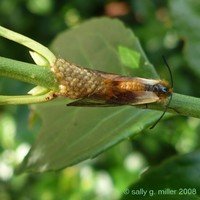
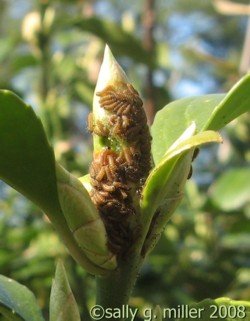
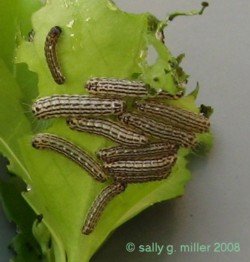
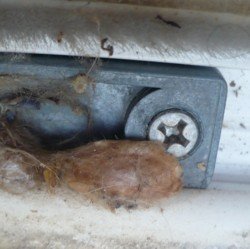
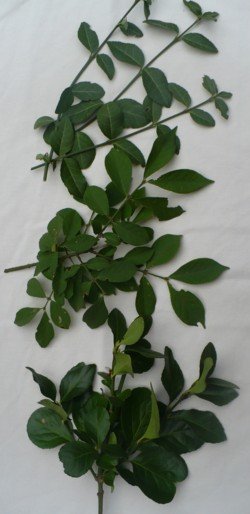
Copyright © www.100flowers.win Botanic Garden All Rights Reserved